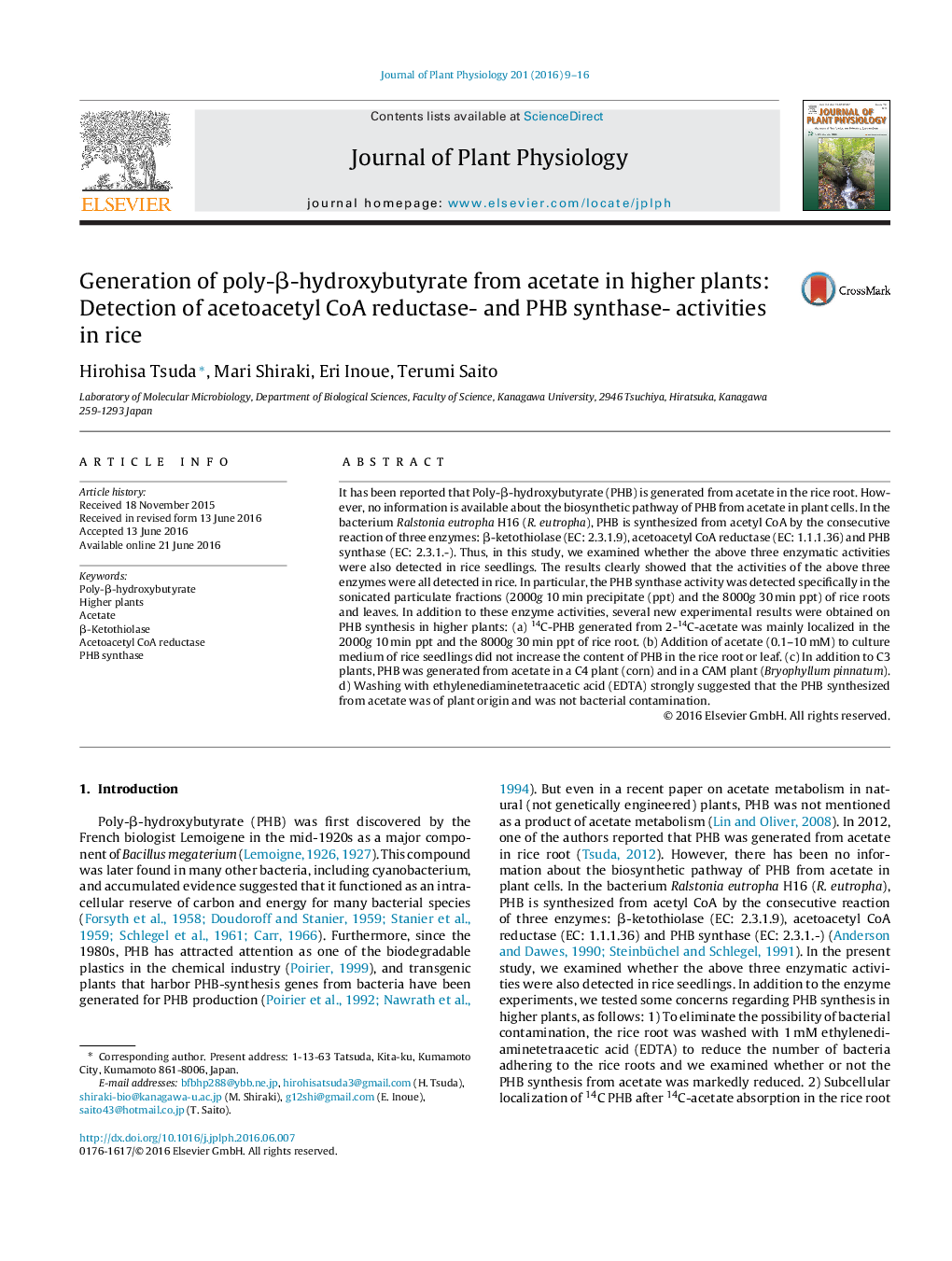| Article ID | Journal | Published Year | Pages | File Type |
|---|---|---|---|---|
| 2055412 | Journal of Plant Physiology | 2016 | 8 Pages |
It has been reported that Poly-β-hydroxybutyrate (PHB) is generated from acetate in the rice root. However, no information is available about the biosynthetic pathway of PHB from acetate in plant cells. In the bacterium Ralstonia eutropha H16 (R. eutropha), PHB is synthesized from acetyl CoA by the consecutive reaction of three enzymes: β-ketothiolase (EC: 2.3.1.9), acetoacetyl CoA reductase (EC: 1.1.1.36) and PHB synthase (EC: 2.3.1.-). Thus, in this study, we examined whether the above three enzymatic activities were also detected in rice seedlings. The results clearly showed that the activities of the above three enzymes were all detected in rice. In particular, the PHB synthase activity was detected specifically in the sonicated particulate fractions (2000g 10 min precipitate (ppt) and the 8000g 30 min ppt) of rice roots and leaves. In addition to these enzyme activities, several new experimental results were obtained on PHB synthesis in higher plants: (a) 14C-PHB generated from 2-14C-acetate was mainly localized in the 2000g 10 min ppt and the 8000g 30 min ppt of rice root. (b) Addition of acetate (0.1–10 mM) to culture medium of rice seedlings did not increase the content of PHB in the rice root or leaf. (c) In addition to C3 plants, PHB was generated from acetate in a C4 plant (corn) and in a CAM plant (Bryophyllum pinnatum). d) Washing with ethylenediaminetetraacetic acid (EDTA) strongly suggested that the PHB synthesized from acetate was of plant origin and was not bacterial contamination.
Graphical abstractA presumed PHB pathway in higher plants.Figure optionsDownload full-size imageDownload as PowerPoint slide
